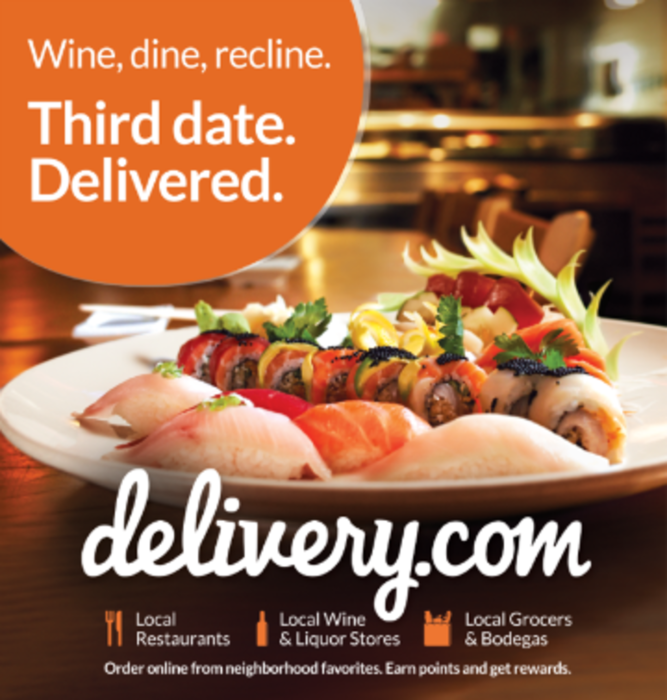Consumers crave immediacy. And apparently, so do their stomachs. Half of consumers between the ages of 18 and 34 have used a personal computer to order food or make reservations, and 35% have placed takeout or delivery orders on a smartphone or tablet, according to the National Restaurant Association. So online ordering platforms such as delivery.com aim to create digital experiences for consumers that are both delicious and expeditious.
But delivery.com has some hearty competition. Takeout tycoons GrubHub and Seamless, which agreed to merge this past May but still run separate ordering platforms, feature more than 20,000 restaurants in more than 500 U.S. cities. The combined company also accounted for $875 million in gross food sales to local takeout restaurants in 2012 and achieved a combined revenue of more than $100 million.
To differentiate itself from its rivals, delivery.com rebranded about one year ago and expanded its online ordering network to include more than just food. Customers can now opt to have their food, alcohol, groceries, and laundry all delivered to their home through delivery.com’s platform.
“Anything you want to do in your daily consumption cycle and get it delivered—we provide that to you,” says Neeraj Sharma, VP of marketing for delivery.com.
Delivery.com’s demographic primarily consists of urban, 18- to 35-year-olds who are early adopters of technology. To acquire this target audience, delivery.com relies on paid search, display ads, event marketing, outdoor ads, metro ads, and partnerships with review sites like Yelp. Sharma says delivery.com tries to play up the more emotional aspects of the delivery business by portraying certain themes in the brand’s ads, such as date night, game day, or TV dinners.
As for customer retention, Sharma says the company turns to social media—including promotions, content, and photo contests—and email to keep customers coming back. But Sharma knows that customers want their brand experiences to be just as customized as the toppings on their pizzas. Because delivery.com’s one million customers don’t all live in the same neighborhood, the online ordering platform started using marketing automation solution provider Sailthru this past July to send emails featuring businesses within blocks of customers’ residences.
“The challenge for us, or any hyper-local company in the market, is how do you get a relevant message to every single person?” Sharma asks. “With over one million customers, how does each person have a different message sent to them?”
Delivery.com uses geo coordinates to locate more than 10,000 merchants in delivery range of its more than one million customers. Using Sailthru, the brand then identifies which businesses in a particular neighborhood deliver and which share something in common. For example, delivery.com might feature four restaurants that are all new to a neighborhood, that offer discounts, or that have the highest customer ratings. About once a week delivery.com sends automated emails featuring these businesses, typically right before breakfast, lunch, or dinner hours. Sharma adds that delivery.com initially tested this email methodology within a few neighborhoods and then expanded it to the company’s entire customer base.
“Everyone has a different subset of restaurants that’s going to be relevant to them,” he says. “It’s not just at the city level. It’s not just at the neighborhood level. It’s the block [level].”
In addition to sending geographically targeted emails, delivery.com runs life cycle campaigns, such as by sending specific emails to customers who haven’t purchased recently. Sharma notes that delivery.com maintains an editorial calendar so it can send responsive-designed emails centered on specific events, such as the Oscars, the Super Bowl, or Chinese New Year.
Since launching the program, delivery.com has seen a 25% increase in active buyers, a 3% increase in average order value, and a 40% increase in open rates.
Delivery.com tries to retain customers by automatically enrolling them in its loyalty program. For every dollar customers spend, they get 25 loyalty points. Customers can save their points to use towards future meals (a $5 delivery.com gift cards costs 12,500 points) or apply their points towards products and services, such as a six-month Netflix subscription (120,000 points) or an 11-inch Macbook Air (1,360,000 points). Customers can even use their points to make a charitable donation.
Sharma says that keeping email content fresh is one of the biggest challenges that delivery.com faces–in part because of customers’ personal tastes. For example, a restaurant may have a four-star rating, but a customer might still give the restaurant a negative review; or a restaurant could have poor ratings but it’s because its new. Sharma says the best way to overcome these challenges is to look at the data and continually test.
“You have to test and learn,” he says. “You won’t learn anything until you try.”








